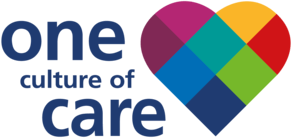A message from our Consultant in Palliative Care, Dr Mary Kiely
We need colleagues' help to track down some missing syringe drivers and we are starting an amnesty to encourage staff to return them.
The McKinley T34 syringe driver is a vital part of ensuring symptom control for patients at the end of life. In order for this to be of greatest benefit for patients, syringe drivers must be available when they are needed. As these devices are small enough to leave our hospitals - and they frequently do- and all staff are responsible for returning them to the equipment pool so that they are available for the next patient who needs one.
There is a very clear and simple process for obtaining a syringe driver, which is not always being followed, leading to delays in patient care.
All devices must be signed for when collected from the equipment store, and the same device returned to the store promptly, either when the patient dies, or their symptoms improve and subcutaneous medicines are no longer needed.
If a patient is discharged from hospital with a syringe driver, nursing staff in the community or hospices must be instructed to return the driver to Andrea Vickerman in the Macmillan unit within 72 hours.
We currently have 17 syringe drivers (valued at £25,000) missing within the hospital or community despite valiant attempts to identify their whereabouts. Staff are not observing the simple process outlined above, so syringe drivers are either unaccounted for and are lying in drawers or cupboards on wards, or are not returned to hospital from the community, meaning that a reduced supply is available at the point of need.
Everyone will agree that easy access to syringe drivers is essential for good patient care but we are at risk of running very short of these important devices. We have lost a significant proportion of them over the last year, and we mustn’t lose any more.
We are hereby announcing an amnesty for staff so that any syringe drivers which may be in a drawer or cupboard on your ward or office are returned as soon as possible to the equipment pool or to Andrea Vickerman. Eventually, processes within EPR may help us keep some track of these devices in real time, but in order to ensure that they remain available when needed, everyone needs to do their bit.
Further guidance can be obtained through the End of Life care pages on the Trust intranet or from the equipment pool guidelines. Guidance is also available from Mark Brennan in EBME (ext 3688 in CRH), or from Andrea Vickerman (ext 2524 in CRH).


